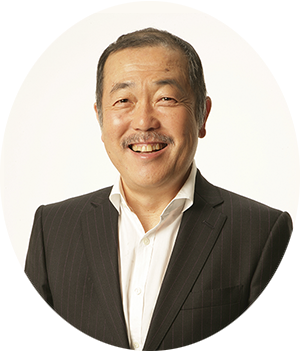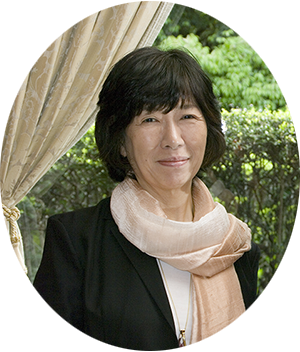About Studio Life
Studio Life is established in 1985 by Kiichiro Kawauchi and Jun Kurata and started producing plays with all-male casts in 1987.
Kiichiro Kawauchi is the head of the company.
Jun Kurata is a playwright and director of its productions.
The theatre company is based in Tokyo and owns a 120-seat theatre.
Studio Life employs 45 actors who are from ages 20 to 64, producing three regular plays and a special play for the development of young players each year. They are performed in not only its own theatre but also other theatres in Tokyo, Osaka and Nagoya.
Studio Life is an all-male theatre company except a playwright/director, Jun Kurata, the only female member. Female characters are acted out by male actors in Studio Life's productions. The sort of defamiliarisation effect achieved by male actors as female characters creates its unique fictitious world which then invites the audience to the world of story. Actors of the theatre company, unlike traditional Kabuki actors, depict female psychology rather than imitate female voice. And such depiction is carefully designed by the director, the only female member of the company.
The company's aesthetics focuses greatly on visual elements such as scenic art, lighting, costumes, make-up and hair design. The theatre company has worked with Matt Kinley (scenic designer), Nick Simmons (lighting designer), Aquirax Uno (multi-award-winning scenic designer/graphic artist), Hisashi Imai (musician and song writer known as a lead guitarist of the rock band, Buck-Tick), Kunihiko Murai (composer/record producer) and other first-rank artists.
Kiichiro Kawauchi Producer/Actor
Founder and executive producer of Studio Life Theatre Company. Kiichiro graduated from Aoyama Gakuin University in the faculty of Science and Engineering. He trained at the drama school affiliated with a theatre company, Bungakuza, and joined En Theatrical Troupe before establishing his own company, Studio Life in 1985. He is also a founder of Kashinoki Shadow Puppet Company and had traveled not only across Japan but also internationally: Indonesia, Russia, Cambodia, Vietnam and France. The puppet company appeared on TV shows for NHK (Japan Broadcasting Corporation). He left the puppet company in 1996 and has been focusing on acting as an actor and producing works for his own theatre company.


Jun Kurata Director/Playwright
Co-founder and director of Studio Life Theatre Company. Jun graduated from Hosei University the Faculty of Letters. She trained at En Theatrical Troupe Drama School and studied under Hiroshi Akutagawa, one of Japan's leading actors and directors. She had worked as an assistant director for the theatrical troupe until 1980.
Since the foundation of Studio Life, she has written and directed most of its productions. For her resent works, she invites various first-class artists both from inside and outside Japan.
She has been organizing workshops for Japanese actors both in London and New York.
Productions
Studio Life's Works
Three main pillars of Studio Life's works are original plays adapted from novels, translated existing plays and original plays dramatized from Japanese comics,'mangas'.
Productions
<Original plays adapted from novels>
Death in Venice by Thomas Mann
The Picture of Dorian Gray by Oscar Wilde
Carmilla by Sheridan Le Fanu
Dracula by Bram Stoker
The Black Tulip by Alexandra Dumas
Pasazerka by Zofia Posmysz
Phantom by Susan Kay
etc.
<Existing plays>
The Cherry Orchard by Anton Chekhov
Daisy Pulls It Off by Denise Deegan
Happy Families by Deborah Lavin
The Hotel Baltimore by Lanford Wilson
Lilies by Michel Marc Bouchard
A Midsummer Night's Dream by William Shakespeare
Romeo and Juliet by William Shakespeare
Twelfth Night by William Shakespeare
The Taming of the Shrew by William Shakespeare
etc.
<Original plays dramatized from Japanese comics>
The Heart of Thomas by Moto Hagio
Fruits Basket by Natsuki Takaya
OZ by Natsumi Itsuki
etc.
Phantom

Part 1: The Untold Story,
Part 2: The Kiss of Christine
Studio Life's Phantom is based on an award winning novel published in 1990 by Susan Kay and the first theatrical production dramatised from this legendary novel in the world.
Studio Life divides the story into two episodes; Part 1, 'the untold story' premiered in 2011 and Part 2 exploring the behind the story, 'the kiss of Christine' premiered in 2012.
From Britain, Matt Kinley (Scenic Designer) and Nick Simmons (Lighting Designer) joined both productions, the Part 1 and 2. Their design employing projections had a reputation for transforming the stage space of 10 square meters into the world of the story itself.
The Part 1 depicts the story before Erik comes to be called the 'Phantom of the Opera'. It starts from the day he is born and ends when he shifts from being a boy to a man, when he decides to embrace his fate that he was born with. The Part 2 opens with scenes of his wandering journey and then the story revolves around the Opera House in Paris. It ends with a scene of a day 13 years after his death, which reveals the heart of the story.
Synopsis
A devilishly ugly baby is born in a small village in France. This baby, Erik, has been never kissed by his own mother who has covered his face with a piece of fabric. He manages to survive but everyone starts to scream and runs away from him as soon as they see his dreadful face. Although he has talents in music and architecture and also has desire for beauty, his sensitivity has been never understood by anyone. He is forced to use his mask as if it is his second skin and this twists him into a boy of random tantrums. One day, he realises that his existence endangers his mother as villagers are planning to attack him. He leaves home and starts travelling though he is still quite young. He ends up in a freak show where he is not treated as a human. He kills the master of the circus to escape and finds a peace of mind elsewhere. But such happiness does not last long. He feels betrayed by the one he has trusted and begins to hide himself in his own shell.
The only comfort for Erik's loneliness is music and architecture. His hand, the one which kills someone, also composes beautiful music and designs sheer beauty. It is the only when he is absorbed in music or designing buildings when he can feel 'alive'. His passion for beauty draws a mission to be involved in the construction of the Paris Opera House, a sanctuary of beauty where music and architecture are fused. He begins to put his heart and soul for this new project. After 20 years of working hard on this, the Paris Garnier Opera House opens. Erik finds a perfectly isolated place below the Opera House to build a liar for himself, where he may live protected from people outside. However, fate does not leave him in peace. He finds Christine, which brings him back to days of agony.
Erik is a person who has been never kissed. On the birthday when he was a small boy, he asked his mother to kiss him. What he got in return was a huge rejection. After half a century since then, he still does not know what it is like to be kissed, what it is like to feel someone's lips on his cheek. And he does not know that there is a beginning of life at the end of his life.
The Heart of Thomas

Manga, one of Japanese forms of storytelling is now gaining worldwide acceptance as contemporary culture. Studio Life is the first theatre company to dramatise a number of manga, attracting a lot of media attention. Among them, The Heart of Thomas by Moto Hagio was the milestone for the theatre company, which enabled the first Japan tour for Studio Life (Tokyo, Nagoya, Osaka and Fukuoka), attracting 20000 audiences in total.
The original manga, The Heart of Thomas was published in 1974 and is one of the best-known works of Moto Hagio, who has won a number of awards including the Inkpot Award in France and a Medal of Honour (Purple ribbon) from the Japanese Government.
Even after 40 years of its first publication, it is still attracting new readers.
The story is set in a boarding school in Karlsruhe, Germany and starts with a rather shocking scene of a boy, Thomas Werner, jumping to a train to kill himself. What does his death mean? The process of answering this question sends us a universal message that nobody can live by oneself. Characters in this story, Julusmole Bayhan who shuts down his mind, his best friend Oscar Reiser, and Eric Fruehling who looks like Thomas who committed suicide, have all secrets. They interact with, confront and hurt each other in that closed space such as a boarding school. They try to face the deepest, darkest aspect of themselves. Such earnest attitudes to lives seem to engage readers' hearts and minds. Their spring of life is so painfully fresh and fragile. Through their days of adolescence, the readers would be able to receive a message that nobody can deny love and feel empathy for their lives.
Studio Life dramatised this manga in 1996 and since then it has been revived 7 times. In June 2014, the 8th revival is planned in Kinokuniya Hall, Tokyo. Minimalistic sets that evoke a feeling of being in a chapel, slender boys in uniforms, lightings with shade and shadow appear on stage. Crystallised love in this theatre space with stoic atmosphere tells a story is attracting wide range of audience beyond genders.
Synopsis
It is a story set in an all-boys boarding school in Germany.
On a Saturday morning at the end of winter, a boy commits suicide.
His name is Thomas Werner.
On Monday morning, Julusmole receives a letter saying 'This is my love. This is my heartbeat. You know that...'
It is the last word from Thomas.
Six month later, a new student named Erik enters the school. To everyone's surprise, he looks exactly like Thomas.
Six month ago, it all started with a little game which was supposed to end up with just a fun which Julusmole calls a 'farce'. There is, however, an unexpected truth behind it...
A Midsummer Night's Dream

Another unique point of this production is that there is a focus on Hippolyta. Usually the same actor takes the roles of Hippolyta and Titania or the roles of Theseus and Oberon. Studio Life's Hippolyta has, however, her own life as a captive queen. Her struggle is visually represented by the shackle at her foot. In the end she finds out that her pendant can be used as a key to unlock the chain herself. While watching the performance of Pyramus and Thisbe dying in a play within a play, she realises how meaningless it is to hate and fight each other and throws herself in Theseus's arms.
The issues of forced marriage of Hermia and forced marriage of Hippolyta in the beginning scene run parallel to each other throughout the story and they meet in the end when Titania and Oberon get back together. A Midsummer Night's Dream, the story of love ends in such a way. The fact that Hippolyta is acted through a male muscular body with tender and graceful movements enhances the image of a female warrior adding extra theatrical reality.
In addition to those points above, music is also a key feature of the production. Long monologues are made into songs that show each character's feeling. Fairies songs especially brighten up the scenes and invite audience to comfortable joy. There are a total of eleven songs in the play.




